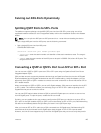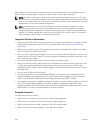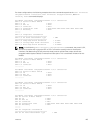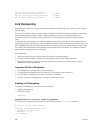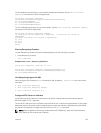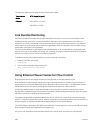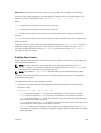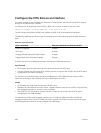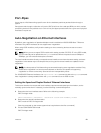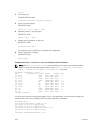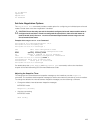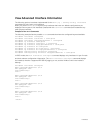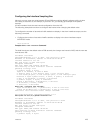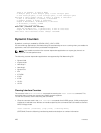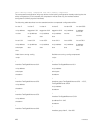
Port-Pipes
A port pipe is a Dell Networking-specific term for the hardware path that packets follow through a
system.
Port pipes travel through a collection of circuits (ASICs) built into line cards and RPMs on which various
processing events for the packets occur. One or two port pipes process traffic for a given set of physical
interfaces or a port-set.
Auto-Negotiation on Ethernet Interfaces
By default, auto-negotiation of speed and duplex mode is enabled on 10/100/1000 Base-T Ethernet
interfaces. Only 10GE interfaces do not support auto-negotiation.
When using 10GE interfaces, verify that the settings on the connecting devices are set to no auto-
negotiation.
NOTE: When you use a copper SFP2 module with catalog number GP-SFP2-1T in the S25P model,
you can manually set its speed with the speed command. When the speed is set to 10Mbps or
100Mbps, you can execute the duplex command.
The local interface and the directly connected remote interface must have the same setting, and auto-
negotiation is the easiest way to accomplish that, as long as the remote interface is capable of auto-
negotiation.
NOTE: As a best practice, Dell Networking recommends keeping auto-negotiation enabled. Only
disable auto-negotiation on switch ports that attach to devices not capable of supporting
negotiation or where connectivity issues arise from interoperability issues.
For 10/100/1000 Ethernet interfaces, the negotiation auto command is tied to the speed command.
Auto-negotiation is always enabled when the
speed command is set to 1000 or auto.
Setting the Speed and Duplex Mode of Ethernet Interfaces
To discover whether the remote and local interface requires manual speed synchronization, and to
manually synchronize them if necessary, use the following command sequence.
1. Determine the local interface status. Refer to the following example.
EXEC Privilege mode
show interfaces [interface | stack—unit stack-unit-number] status
2. Determine the remote interface status.
EXEC mode or EXEC Privilege mode
[Use the command on the remote system that is equivalent to the first command.]
3. Access CONFIGURATION mode.
EXEC Privilege mode
Interfaces
421



